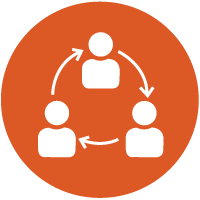
Aim and objectives:
Shared decision-making is a joint process in which a healthcare professional works together with a person to reach a decision about care. It involves choosing tests and treatments based both on evidence and on the person's individual preferences, beliefs and values.
Target group:
The key audiences for decision aids of the National Institute for Care and Excellence (NICE) are people facing those decisions (and their carers, guardians and relatives as appropriate) and the practitioners involved in their care. Secondary audiences are organisations commissioning or providing care (which may include decision aids in policies and pathways), and voluntary and community sector organisations (which may promote them to the people with whom they work).
Method:
Preference-sensitive decision points are points where the person’s values and preferences are particularly important. They occur when either:
There are two or more options for investigation, treatment or care that deliver similar outcomes but:
- they have different types of harms and benefits which people may value differently, or
- the likelihood of the harms or benefits may differ, or
- the practicalities of the options are different (for example, the choice is between medicine and surgery, or the requirements for monitoring differ), or
- people may consider the overall risks of harms for any of the options outweigh the overall benefits compared with no treatment.
or
- The choice between an investigation, treatment or care option and the option of 'no treatment' is finely balanced.
The NICE decision aids are developed for various treatments and care options which helps to:
- summarise the best available evidence relating to the effectiveness, safety and practical factors relating to the treatment or care options, and
- present that information in a way that is easy for people facing the decision (and their carers, as appropriate) to understand, with support from their health or care practitioner, so that they can weigh up the options pros, cons and trade-offs.
Outcome:
Decision-making aids allow people to discuss and share information. This makes sure people have a good understanding of the benefits, harms and possible outcomes of different options. Shared decision-making empowers people to make decisions about the treatment and care that is right for them at that time, including choosing to continue with their current treatment or choosing no treatment at all.
Added value:
Shared decision-making tools allow people the opportunity to choose to what degree they want to engage in decision making. Although, at times, some people prefer not to take an active role in making decisions with their healthcare professionals.



